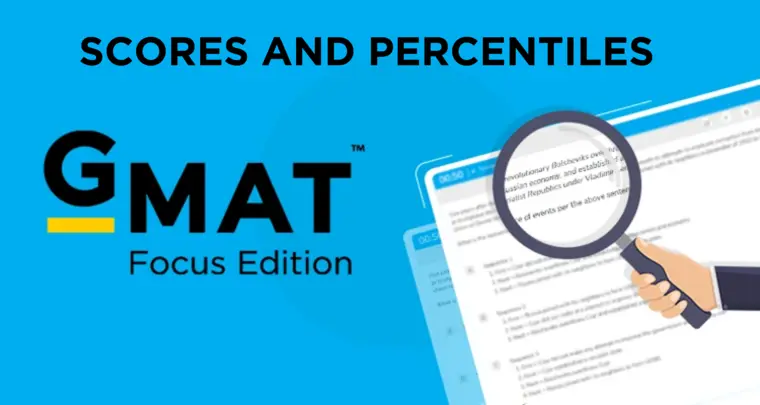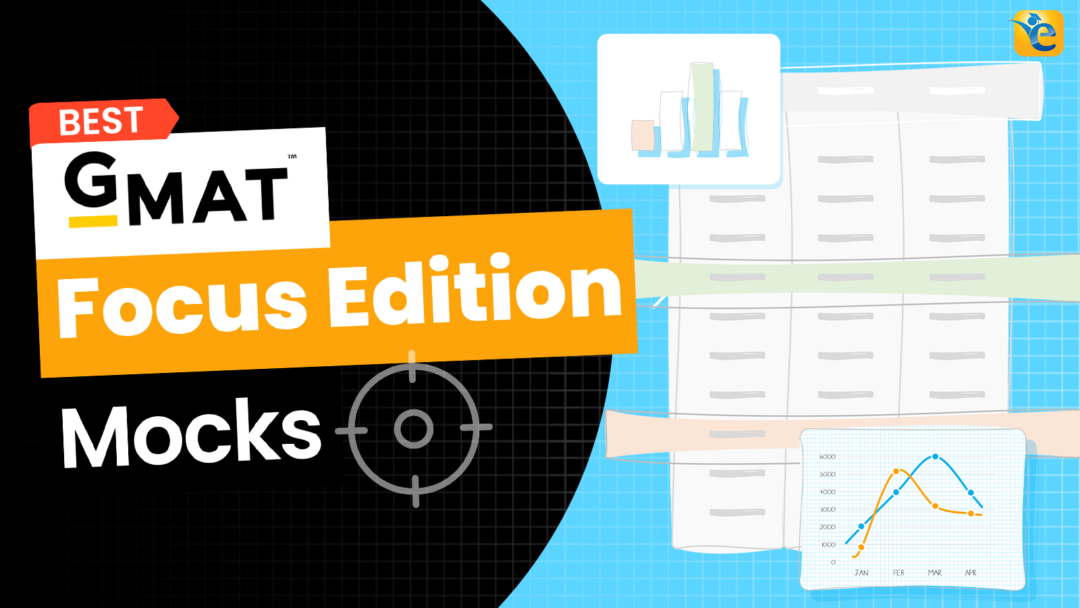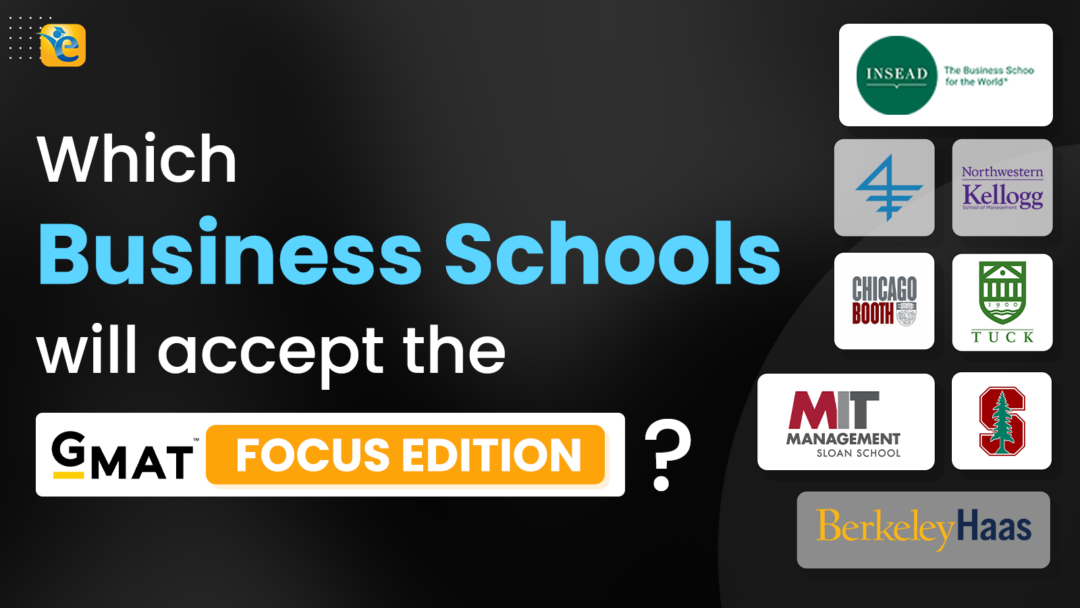Introduction
Scoring 705 or higher on the GMAT Focus Edition, corresponding to the elite 99th percentile on the GMAT Focus Edition is a remarkable feat, representing the pinnacle of performance – the 99th percentile, 715 on the GMAT focus Edition. It is a milestone that few can proudly claim, signifying not only mastery of content but also the strategic finesse in test-taking. This is the story of Sankha, an e-GMATer who not only reached this coveted score but soared beyond it, securing a 715 on the GMAT Focus – a score that stands as a beacon of what is possible when determination meets direction.
This comprehensive article unfolds Sankha’s journey across several pivotal sections, each chronicling a distinct facet of his preparation and offering rich insights into the art of mastering the GMAT. Readers can navigate through Sankha’s narrative, drawing upon the wisdom encapsulated in each segment:
- Acing Verbal – 98th Percentile: Delve into Sankha’s foundational strategies for mastering Reading Comprehension and scaling the heights of the 98th percentile in Verbal.
- Conquering DI – 91st Percentile: Explore how Sankha tackled the Data Interpretation section with rigorous practice and strategic focus, even with just 15 days of preparation.
- Perfecting Quant – 100th Percentile: Uncover the meticulous approaches that led Sankha to a perfect Quant score, leveraging tools like e-GMAT’s Pace AI for targeted learning.
- Verbal and Quant Scholaranium – The Roadmap to Perfection: Understand the role of e-GMAT’s Scholaranium in providing a roadmap to score maximization in both Verbal and Quant sections.
- Maximizing Performance – Sankha’s 715 Attempt: Hear firsthand about the test day experience that culminated in a 715 score and learn about the critical decisions that made it possible.
- Sankha’s Study Time: Get an inside look at Sankha’s disciplined study habits and learn how he balanced a rigorous study plan with professional commitments.
- Overall Lessons from This GMAT Journey: Reflect on the overarching lessons from Sankha’s GMAT experience and how they can be applied to academic and professional endeavors.
Watch this video to get a glimpse of Sankha’s strategies , how he scored 715 on the GMAT Focus Edition :
Each section of Sankha’s narrative is not just a chapter in a success story; it is a guidepost for current and future GMAT aspirants. By navigating through these segments, readers will gain a framework for decision-making, strategies for acing each section of the GMAT, and most importantly, the inspiration to pursue their goals with an infectious zeal for excellence.
Ready to tackle the GMAT Focus Edition? e-GMAT offers a Personalized Study Planner and top-notch Free GFE mock exam to help you prepare effectively. As the most reviewed GMAT prep company on GMAT Club with 2700+ reviews we’re here to support your GMAT Focus journey. Take advantage of our free trial with the best quality content. Start your path to success today!
- Introduction
- Sankha’s Path to GMAT Verbal Excellence: 60th to 98th Percentile
- Sankha’s Path to GMAT Quantitative Mastery: The Q90 Achievement
- Sankha’s Path to 90th Percentile in GMAT Data Insights: Leveraging e-GMAT’s DI Course
- Sankha’s Strategic Use of Scholaranium in GMAT Preparation
- Sankha’s Strategies for the GMAT Focus Edition
- Sankha’s GMAT Preparation Strategy: Time Management and Energy Conservation
- Lessons from Sankha’s GMAT Journey and Their Future Application
Sankha’s Path to GMAT Verbal Excellence: 60th to 98th Percentile
Sankha first took a diagnostic test to assess his baseline abilities in Critical Reasoning (CR) and Reading Comprehension (RC). This served as a roadmap for his verbal journey ahead. He then targeted each section independently, starting with CR. His first step – Strengthen the basics of reading, using the Meaning Based Approach.
- Embracing the Meaning-Based Approach – Central to Sankha’s strategy was the meaning-based approach, especially effective in Sentence Correction (SC), CR, and RC. This technique involved dissecting sentences and texts to understand their fundamental meanings, enhancing comprehension and analysis skills.
- Pre-Thinking in Critical Reasoning – In CR, Sankha emphasized the pre-thinking method. Before looking at the answer choices, he would anticipate possible answers with the goal of understanding the argument’s logic, thus sharpening his critical thinking and speeding up the problem-solving process by easily rejecting close answer choices.
- Strategic Reading in Comprehension – Sankha tackled Reading Comprehension by applying the skills honed in CR. He focused on understanding the author’s intentions and the deeper meanings of texts, rather than just reading extensively.
- Overcame Myths – Sankha debunked the myth that extensive reading alone leads to RC success. He demonstrated that strategic comprehension skills are crucial for dissecting and understanding complex texts within the GMAT’s time constraints.
- Final Preparation – Targeting – In his final preparation phase, Sankha concentrated on mastering medium and hard difficulty questions. He simulated exam conditions in Scholaranium to adapt to the time pressure and refine his exam strategy.
Sankha’s Path to GMAT Quantitative Mastery: The Q90 Achievement
Sankha began his quantitative preparation by identifying his baseline ability in math, using e-GMAT’s diagnostic tests to determine his strengths and weaknesses. This initial assessment guided his focused approach to the Quant section.
- Embracing the PACE AI Feature – Central to Sankha’s strategy was the innovative use of the PACE AI (Personalized Adaptive Course Engine) feature, a tool that tailored his study based on his Strengths and Weaknesses. This technology played a crucial role in optimizing his study time, allowing him to concentrate on areas that needed improvement while avoiding unnecessary review of his strong points.
- Saved 43 hours in NP and WP – In areas where Sankha was already proficient, such as number properties and word problems, the Pace AI recommended minimal focus. This allowed him to save significant time (43 hours), dedicating more hours to improving his weaker areas.
- Focused Improvement in Weaker Areas – In subjects like algebra and geometry, which were initially less strong for Sankha, he applied a targeted approach. The Pace AI directed him to work on the majority of the concept files in these areas, ensuring a comprehensive understanding and improvement.
- Overcoming Overconfidence – Sankha recognized the importance of not being complacent in areas he considered strengths. He acknowledged that even in familiar topics, there was always room for refinement and perfection.
- Final Preparation – Targeted Practice – In the final stages of his prep, Sankha’s focus was on addressing medium and hard difficulty questions, particularly in areas identified by the Pace AI. He practiced under exam-like conditions, using Quant Scholarnaium that mimicked the GMAT’s structure and time constraints, to hone his skills to perfection.
Also check out
1) Ritachit’s Journey: GMAT 655 (93rd Percentile)
2) Vijay’s Journey: GMAT 645 (89th Percentile)
Sankha’s Path to 90th Percentile in GMAT Data Insights: Leveraging e-GMAT’s DI Course
Understanding the importance of specialized preparation, Sankha turned to e-GMAT’s newly launched DI course. This course provided him with structured and comprehensive material tailored to the GMAT’s Data Insights section.
Through the e-GMAT course, Sankha systematically worked through each subsection, including table analysis, graphical interpretation, two-part analysis, and multi-source reasoning. The course’s structured approach allowed him to delve deeply into each area, ensuring a thorough understanding.
- Visualization and Analytical Techniques – A crucial part of his success came from adopting the visualization and analytical techniques taught in the e-GMAT course. These strategies were particularly helpful in efficiently navigating complex Data Insights questions without over-reliance on pen-and-paper calculations. This helped him save time, the most precious commodity on the DI.
- “DI is very time-consuming. So I knew that you know I’m going to have to skip some questions and achieve high accuracy on others. I focused my time on 17 questions and got 14 out of them correct – the concepts learned in the course helped a lot” – Sankha, on his 90th percentile DI score on the focus edition
- Strategic Test-Taking Based on Course Insights – Informed by the insights and strategies gained from the e-GMAT DI course, Sankha developed a strategic approach for the actual exam. He chose to focus on his strengths and efficiently allocate his time, particularly in challenging sections like multi-source reasoning.
- The Role of DI Cementing in Final Preparation – The DI Cementing phase, an integral part of the e-GMAT course, was instrumental in Sankha’s preparation. It simulated the exam’s time pressure and helped him refine his quick-thinking abilities, crucial for the Data Insights section.
- “The cementing phase was an exact replica of what happens in the test. They crunch you for time, require you to think on your feet, and minimize the use of calculation. Once you cross the cementing phase well, you can confidently say that you’re in a position where you’re prepared well for those situations.” – Sankha, 99th percentile, 715 on the GMAT Focus Edition.
Sankha’s Strategic Use of Scholaranium in GMAT Preparation
Sankha’s journey to excel in the GMAT was significantly aided by his strategic use of Scholaranium, a comprehensive practice tool included as a part of e-GMAT’s course offerings. He leveraged this resource for both the Quant and Verbal sections, tailoring his practice to address specific weaknesses and solidify his strengths and he scored 715 on the GMAT focus Edition.
- The Challenge and Insight of Verbal Scholaranium – Sankha found the questions in Verbal Scholaranium particularly challenging, especially as he progressed to medium and hard difficulty levels. This tool’s unique value lay in its ability to pinpoint exact areas needing improvement. For instance, while he was naturally skilled in assumption questions within Critical Reasoning, he needed more practice in strengthen/weaken type questions.
- “There are a couple of questions on the critical reasoning on my very first attempt that were extremely similar in content and style to the questions that I practiced on the verbal Scholaranium. To have those questions just get done with in under 30 seconds that gives you the extra push and that extra confidence as well.” – Sankha
- Scholaranium’s Role in Boosting Scores – Sankha recognized that for aspiring high scorers on the GMAT, it was crucial not to neglect areas of weakness. Scholaranium helped him identify these areas and provided targeted practice to improve them. For example, Scholarnaium analytics indicated that he struggled with evaluative questions, even though he was strong in Assumption and Strengthe/Weaken. Once he made the diagnosis, he revisited practice files, then returned to Scholaranium for customized quizzes, to confirm that he has actually improved.
- This approach was vital, as weaknesses in any subsection could significantly lower overall scores.
- Real Test Simulation and Confidence Building – Some of the critical reasoning questions he encountered in the actual GMAT were strikingly similar in content and style to those he practiced in Verbal Scholaranium. This similarity not only boosted his confidence but also allowed him to answer questions more efficiently during the exam.
Sankha’s Strategies for the GMAT Focus Edition
Sankha’s approach to the GMAT Focus Edition (GFE) was marked by strategic preparation and understanding the unique aspects of this format. He adapted his strategies to align with the distinctive features of the GFE compared to the classical GMAT.
- Understanding the Differences in GFE – Sankha noted that the GFE is significantly shorter than the classical GMAT. One key difference he highlighted is the reduction in the number of initial screens and the elimination of the need to send scores on the test day, which eases anxiety and streamlines the process.
- Strategic Break Management – A crucial aspect of the GFE is the break structure. Sankha pointed out that candidates get fundamentally two breaks, with only one being a longer 10-minute break. Deciding when to take this break is critical. Sankha chose to take his longer break after the Quantitative section, as he felt more comfortable with it, using the break to refresh and prepare for the Verbal section.
- Tailored Section Order – Sankha leveraged his strengths by starting with Quant, his stronger section, followed by the Data Insights section, and then taking a break before tackling Verbal. This order allowed him to manage his energy and concentration effectively.
- Mock Test Simulations – To replicate the test day conditions, Sankha practiced mock tests without pausing them in between sections, ensuring a realistic test experience. He emphasized the importance of this practice, as it prepares candidates for the endurance and mental agility required on the actual test day.
- Adapting to the Three-Section Format – The GFE differs from the classical GMAT in that there are three sections to manage instead of two. Sankha stressed the need to adapt strategies accordingly, as managing three sections poses a different kind of challenge.
- Consistency in Test Experience – Despite these differences, Sankha mentioned that the overall test experience remains more or less the same between the GFE and the classical GMAT. The core challenge of the GMAT, in terms of content and skills tested, remains consistent across different editions.
Sankha’s GMAT Preparation Strategy: Time Management and Energy Conservation
Sankha’s approach to preparing for the GMAT was characterized by careful time management and strategies to maintain high energy levels, crucial for balancing study with other commitments and hitting the score 715 on the GMAT focus Edition.
- Daily Routine and Study Schedule – Sankha’s day typically began early, around 6:30 to 7:00 AM, a time he found his mind most fresh and conducive for study. He dedicated about an hour each morning to GMAT preparation before proceeding to his office work. After finishing his work day around 7:30 to 8:00 PM, he would engage in some physical exercise to rejuvenate his body and mind. Around 9:00 PM, he committed another half hour to his GMAT studies, amounting to a total of about one and a half hours of focused effort on weekdays.
- Weekend Intensive Study Sessions – On weekends, Sankha significantly ramped up his study time, devoting around 6 to 8 hours each day. This intensive weekend schedule was crucial for covering substantial ground in his preparation. He made sure to avoid social engagements or outings during this time, dedicating his full attention to GMAT study.
- Balancing Studies with Physical Activity – Sankha emphasized the importance of physical activity as a means to keep his energy levels up. Regular exercise helped him stay mentally and physically fit, which was essential for effective learning and retaining information.
- Modular Approach to Learning – He advocated for a modular approach to studying for the GMAT, focusing on one section at a time before moving to the next. This approach prevented the confusion and inefficiency that can come from juggling multiple sections simultaneously.
- Following a Structured Study Plan – Sankha strongly recommended following the specific study plan recommended by e-GMAT, which involved starting with the basic courses, progressing to cementing quizzes, and finally moving on to test readiness. He advised against skipping sections or studying them out of order, as this could lead to ineffective preparation.
- Reflection and Continuous Improvement – Throughout his preparation, Sankha constantly reflected on his mock test performances to identify areas of weakness. He then focused his efforts on these areas during his study sessions. This continuous cycle of assessment and improvement was key to his success.
We recommend you to check out our in-depth article on the GMAT Focus Study Plan for a detailed understanding of how you should structure your GMAT focus preparation.
Lessons from Sankha’s GMAT Journey and Their Future Application
Sankha’s journey through the rigors of GMAT preparation not only led him to success in the exam but also imparted valuable life lessons that he plans to carry into his future endeavors.
- Resilience in the Face of Challenges – One of the key lessons Sankha learned was the importance of resilience. Facing difficult situations is inevitable, but the ability to acknowledge these challenges and move forward is crucial. He learned to not let difficulties bog him down or deter his pursuit of goals.
- The Two P’s: Patience and Perseverance – Sankha believes strongly in what he calls the two P’s: patience and perseverance. He emphasized that everyone possesses these qualities, but the willingness to cultivate and bring them out is what makes the difference. This belief in inherent strength and the ability to develop it further was a crucial takeaway from his GMAT experience.
- Self-Confidence Balanced with Humility – Another significant lesson was the importance of self-confidence, balanced with humility. Acknowledging one’s natural abilities, backing oneself, and having self-confidence are essential, but equally important is being humble enough to recognize and work on one’s weaknesses.
- The Role of Mentorship and Support – Sankha expressed deep gratitude for the mentorship and support he received during his preparation. He highlighted the importance of having someone who provides not just academic guidance but also emotional and mental support. This aspect of his journey underscored the value of mentorship in achieving success.
- Continuous Learning and Strength Building – The GMAT journey taught Sankha that challenges and setbacks are opportunities for learning and becoming stronger. He believes that the journey has made him a stronger person overall, a lesson he finds invaluable.
- Consistent Effort and Incremental Improvement – Sankha’s journey reinforced the belief that consistent effort and aiming for incremental improvement can lead to significant growth over time. He advocates for putting in effort every day, as even a small daily improvement can accumulate into substantial development.
Dive into the complete interview journey just below – don’t miss out!
Start your GMAT Focus journey with our free GMAT Focus mock test to gauge your baseline score, and then create a personalized study plan. Dive into our free trial for targeted prep. Trusted by thousands with 2700+ reviews on GMAT Club, e-GMAT is your partner in mastering the GMAT. Contact us at support@e-gmat.com for expert guidance.













